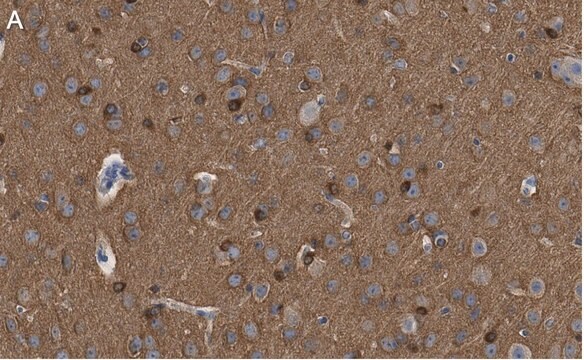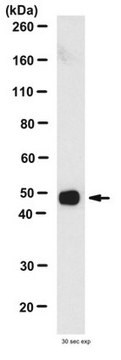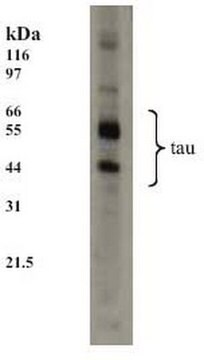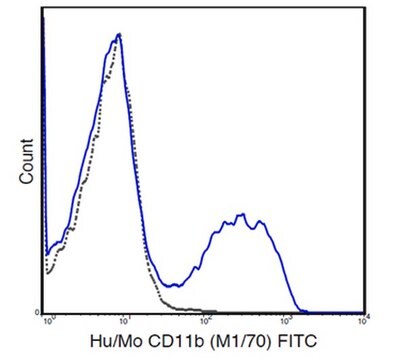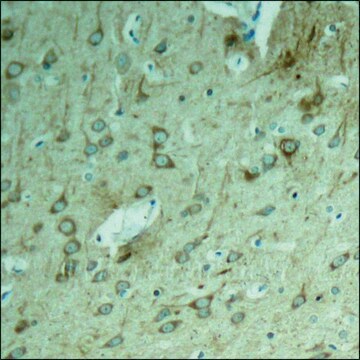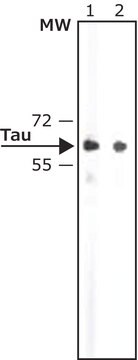MABN2472
Anti-Tau Antibody, clone 2A1-2E1
clone 2A1-2E1, from mouse
Synonim(y):
Microtubule-associated protein tau, Neurofibrillary tangle protein, Paired helical filament-tau, PHF-tau
About This Item
Polecane produkty
pochodzenie biologiczne
mouse
forma przeciwciała
purified immunoglobulin
rodzaj przeciwciała
primary antibodies
klon
2A1-2E1, monoclonal
reaktywność gatunkowa
mouse, human
opakowanie
antibody small pack of 25 μg
metody
immunohistochemistry: suitable
western blot: suitable
izotyp
IgG2aκ
numer dostępu NCBI
numer dostępu UniProt
docelowa modyfikacja potranslacyjna
unmodified
informacje o genach
human ... MAPT(4137)
mouse ... Mapt(17762)
Opis ogólny
Specyficzność
Immunogen
Zastosowanie
Neuroscience
Immunohistochemistry Analysis: A representative lot detected Tau in Immunohistochemistry applications (Ishigaki, S., et. al. (2017). Cell Rep. 18(5):1118-1131).
Jakość
Western Blotting Analysis: 2 µg/mL of this antibody detected Tau in human Tau-441 recombinant protein lysates.
Opis wartości docelowych
Postać fizyczna
Przechowywanie i stabilność
Inne uwagi
Oświadczenie o zrzeczeniu się odpowiedzialności
Nie możesz znaleźć właściwego produktu?
Wypróbuj nasz Narzędzie selektora produktów.
Kod klasy składowania
12 - Non Combustible Liquids
Klasa zagrożenia wodnego (WGK)
WGK 1
Temperatura zapłonu (°F)
Not applicable
Temperatura zapłonu (°C)
Not applicable
Certyfikaty analizy (CoA)
Poszukaj Certyfikaty analizy (CoA), wpisując numer partii/serii produktów. Numery serii i partii można znaleźć na etykiecie produktu po słowach „seria” lub „partia”.
Masz już ten produkt?
Dokumenty związane z niedawno zakupionymi produktami zostały zamieszczone w Bibliotece dokumentów.
Nasz zespół naukowców ma doświadczenie we wszystkich obszarach badań, w tym w naukach przyrodniczych, materiałoznawstwie, syntezie chemicznej, chromatografii, analityce i wielu innych dziedzinach.
Skontaktuj się z zespołem ds. pomocy technicznej